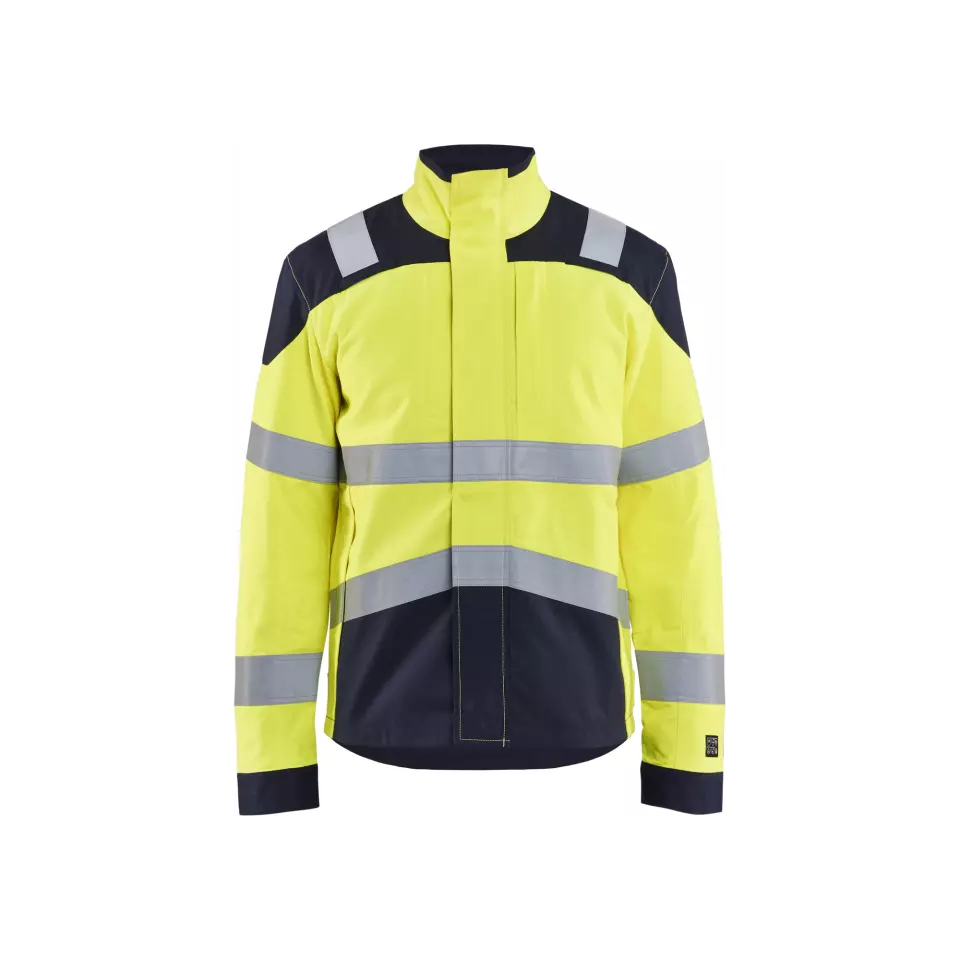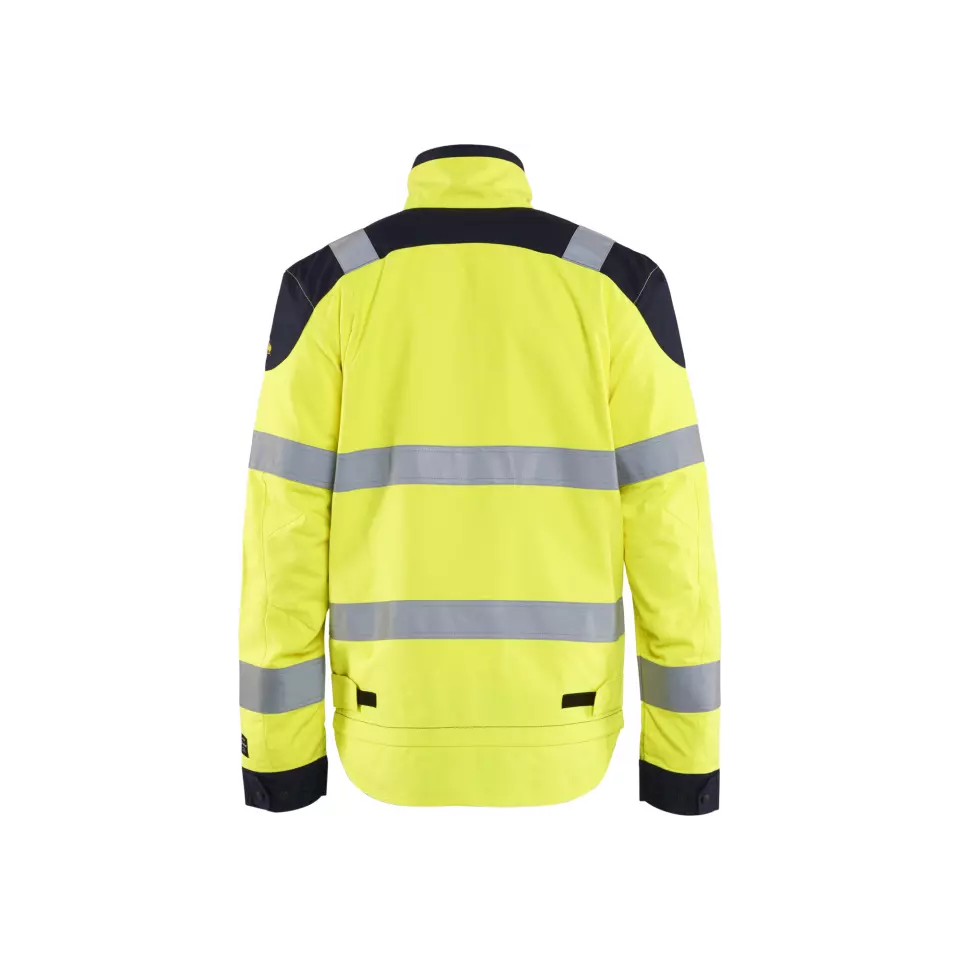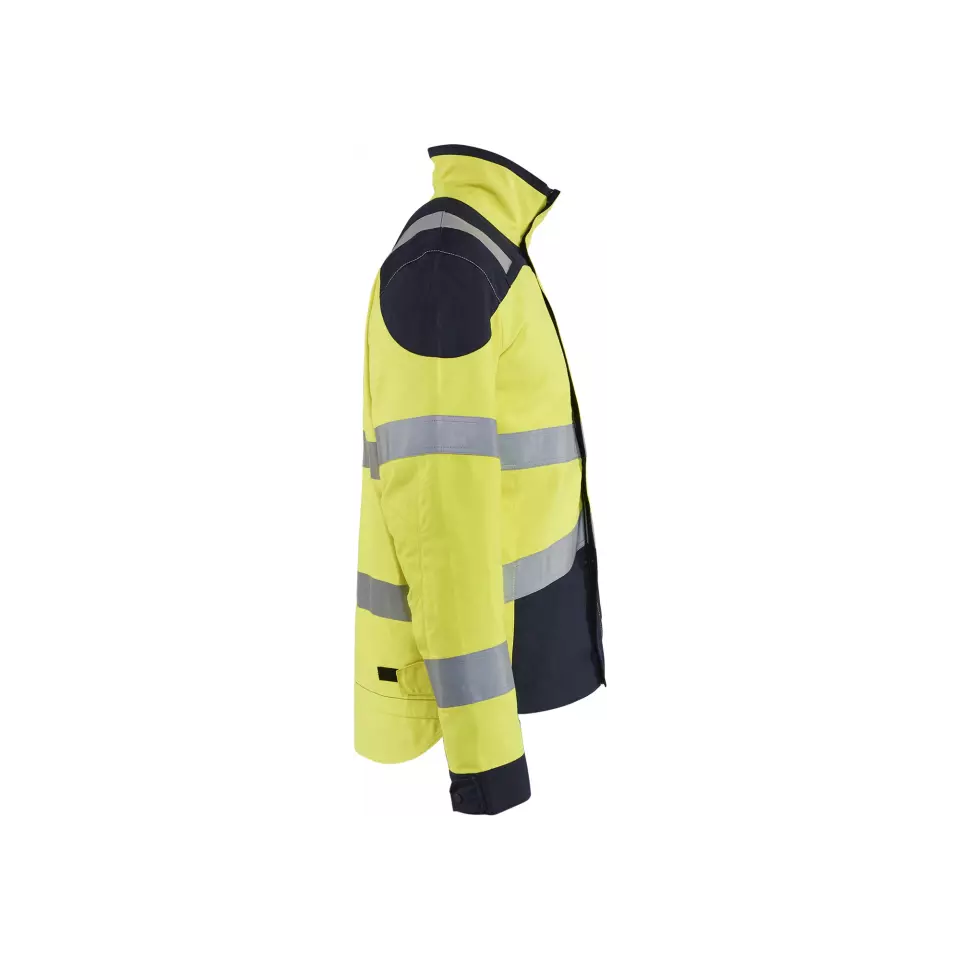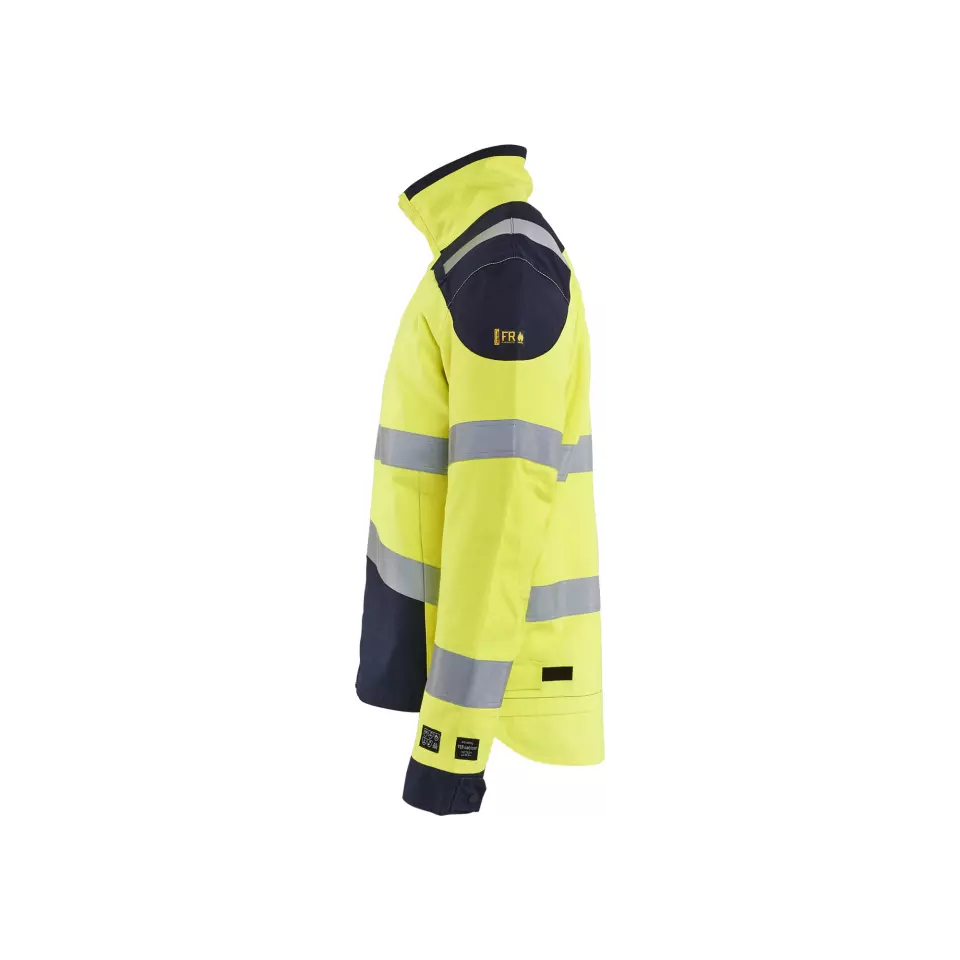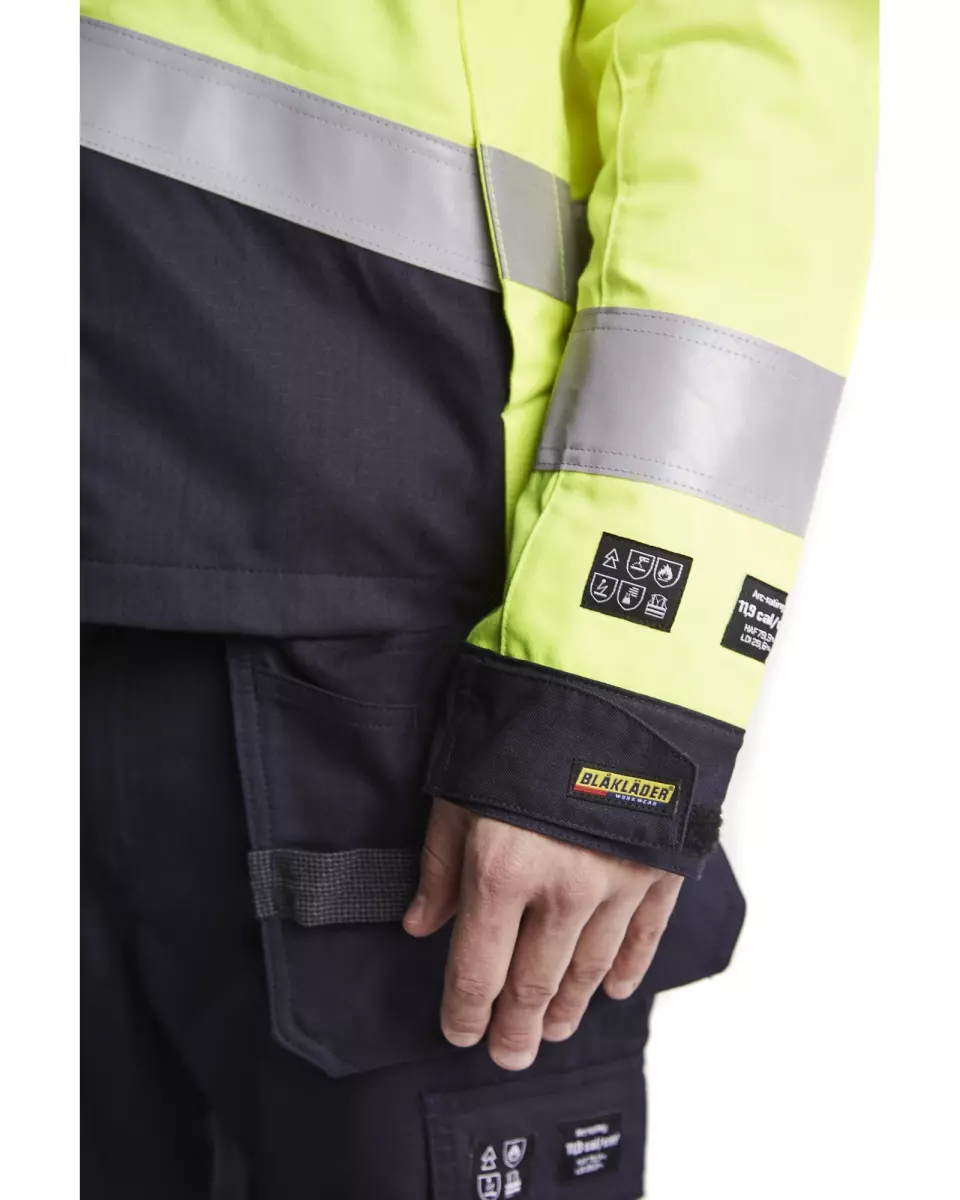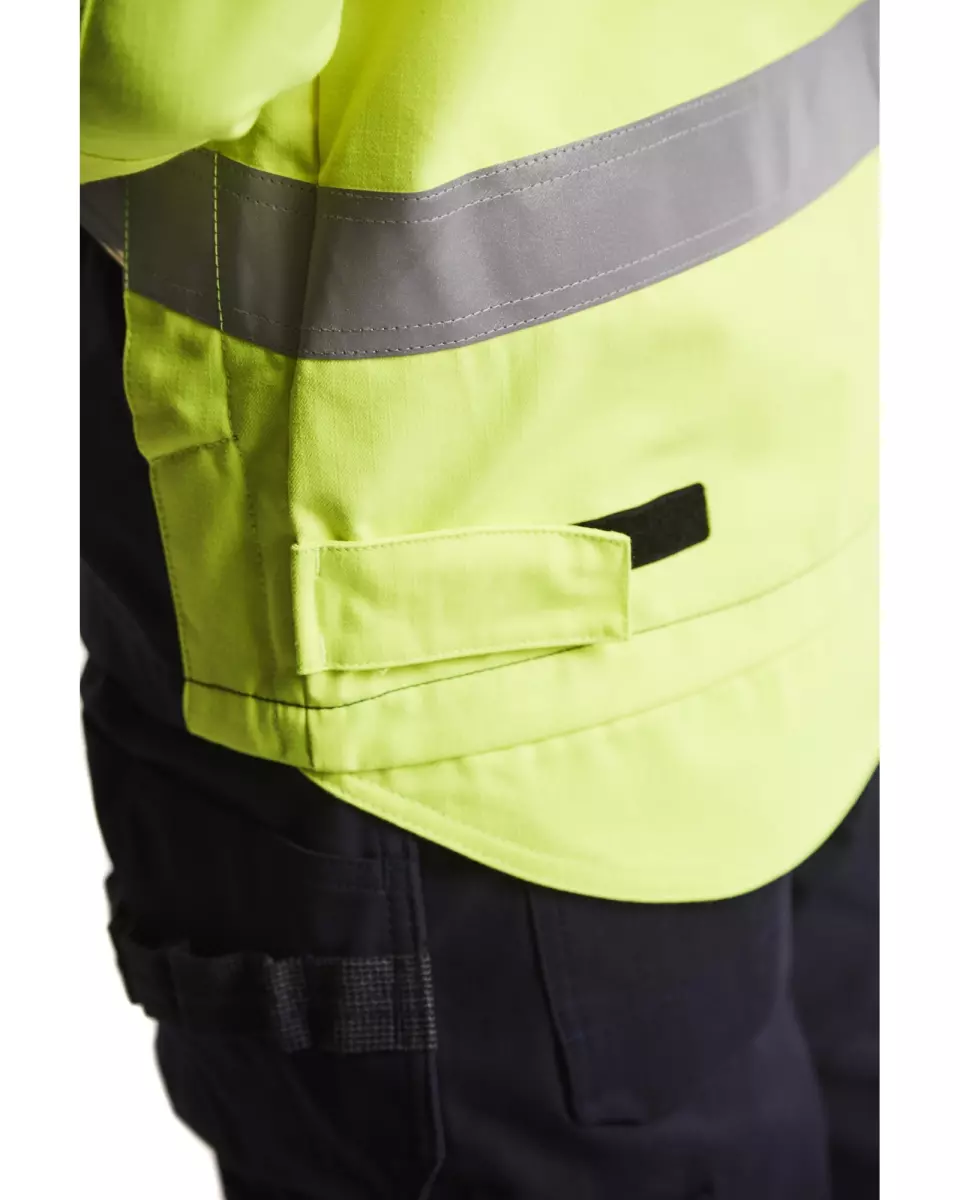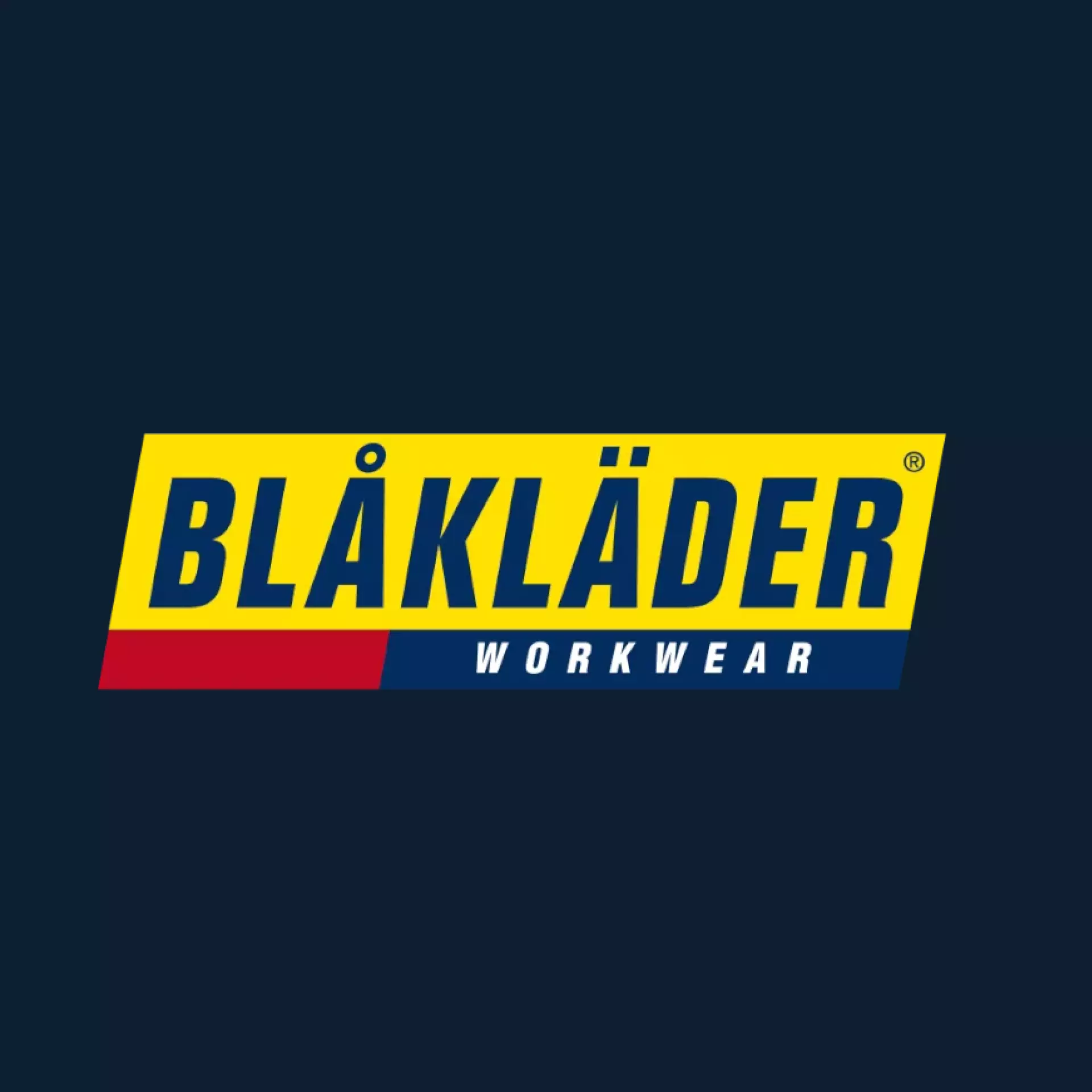Multinorm Jacket, Yellow/Navy Blue
5.0 / 5
Product description
This multi-norm jacket made of inherently flame-resistant material offers oil, dirt and water-repellent properties for demanding industrial environments. With an ATPV value of 11 cal/cm² and certification according to multiple EN and ISO standards, it ensures comprehensive protection while maintaining an excellent strength-to-weight ratio. The ripstop fabric provides outstanding tear resistance and is tested and approved for up to 50 wash cycles. The jacket achieves Class 3 certification according to EN ISO 20471 when combined with corresponding trousers.
Product Features:
- Inherently flame-resistant material with natural flame-retardant properties in the fibers
- Double chest pockets with concealed zipper
- Pre-shaped sleeves for improved freedom of movement
- Extended back and adjustable waist with velcro closure
- Adjustable cuffs with snap buttons
Technical Details:
- Material composition: 44% Modacrylic, 30% Cotton, 20% FR Polyamide, 5% Aramid, 1% antistatic
- Weight: 260 g/m²
- Ripstop construction for increased tear resistance
- ATPV: 11 cal/cm²
- Metal-free and PFAS-free
Recommended Applications:
- Road and construction workers
- Electricians
- Craftsmen
- Service personnel
Standards:
- EN 1149-5 (antistatic)
- EN ISO 11611 Class 1 A1 A2 (welding protection)
- EN 13034 PB [6] (chemical protection)
- EN ISO 20471 Class 2/3 (high visibility)
- EN ISO 11612 A1, A2, B1, C1, E2, F1 (heat protection)
- EN 61482-2 APC 1 (electric arc protection)
- EN ISO 15797 (industrial laundering)
- OEKO-TEX® Standard 100
- OEKO-TEX® MADE IN GREEN
- Machine Washable
- Welding
- Water Resistance
- Electrical Protection
- High Visibility
- Heat & Flame Resistance
- Chemical Resistance
- Arc Flash Resistance
Standards and labels
Blåkläder delivery terms
Free delivery for all Blåkläder products
224,15 €
Free delivery
Sold in units of one piece
Need larger quantities?
Other products you may like
Recently viewed
Other products you may like
Similar products you may like
Autonomous sourcing platform
The most efficient way to source and order supplies for your operations
